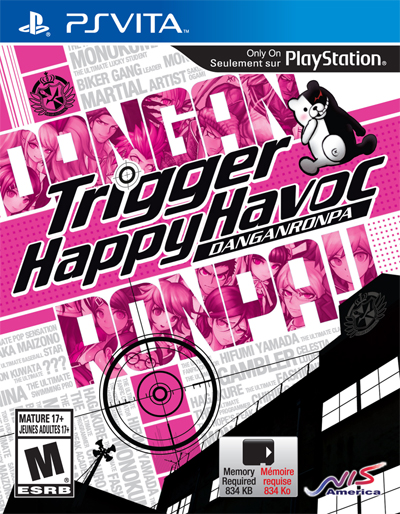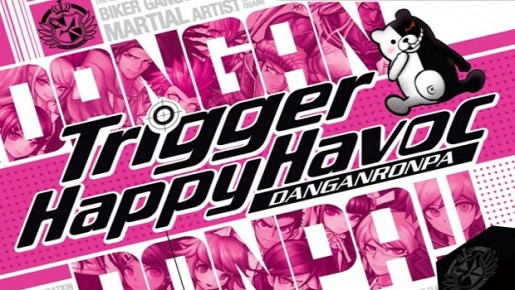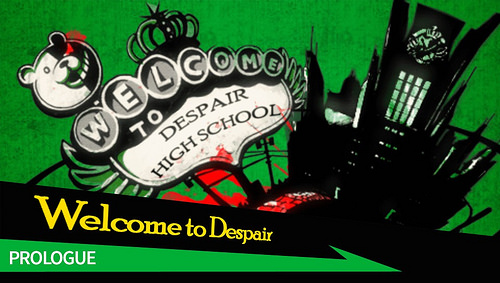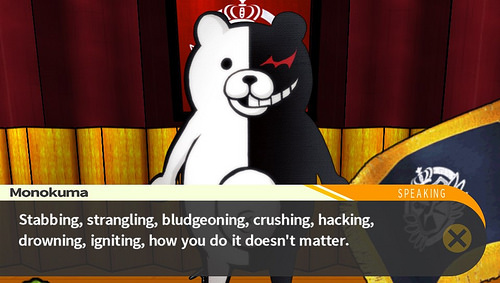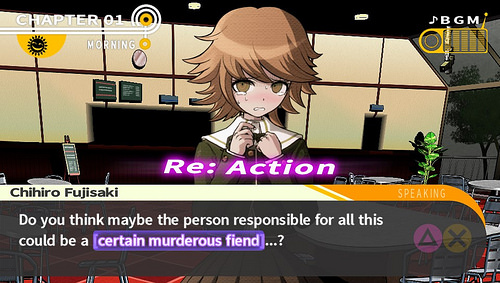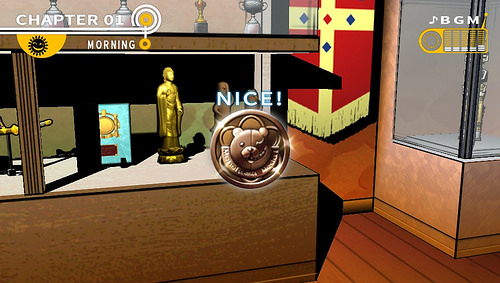(Spike) Chunsoft has established themselves as one of the pioneers of the sound novel genre, with both of the Zero Escape titles under their design. Now, NIS America has published Danganronpa: Trigger Happy Havoc for Western audiences with the game’s Vita release.
The setting for Danganronpa takes place in the Hope’s Peak Academy, a high school where only the top elite are admitted. These top students are always of the highest caliber, or the Ultimate students. Among these students include the Ultimate Fanfic Creator, Ultimate Pop Sensation, Ultimate Programmer, and more. And then there’s you, Makoto Naegi, a seemingly average student with no special abilities. By way of a national lottery that randomly selects one student to become the fifteenth student in the sophomore class, Makoto is picked, deeming him the title of the Ultimate Lucky Student.
Hope’s Peak Academy is a prestigious school known for raising the country’s top elite, and grooming them to become the very best. It’s known that whoever can endure the curriculum and graduate will be set for the rest of their life. For those students currently studying at Hope’s Peak, the school becomes their home. No contact with the outside world, no distractions, no escape. What could once be the perfect location to focus on one’s studies soon becomes the location of a series of gruesome murders.
Enter Monokuma (voiced by the VA for Doraemon in the Japanese dub), the two-toned mascot of the Danganronpa series and self-proclaimed principal of Hope’s Peak Academy. Under his guidance, he hopes to turn the class- and soon the world- into place devoid of hope and filled with despair. After trapping the 15-student class behind sealed doors, he challenges the group to a simple game.
Everyone is trapped indefinitely in the academy and given just one option if they wish to escape: kill. The basic rules behind Trigger Happy Havoc are quite simple. If you kill a fellow classmate, you and only you are allowed to walk free from the school, an act perversely called graduating. However, Monokuma himself doesn’t think that’s entertaining enough for a game and adds a condition that the killer must get away with the crime as well. After a student is killed, the remaining student body is rounded up.
Part of the real ‘game’ Monokuma has devised consists of holding a mock trial to determine who the true killers’, referred to as ‘blackened’, identity is. If the student body can reach a consensus and reveal the blackened’s true identity, the killer is found guilty and executed on the spot. On the other hand, if you the player aren’t clever enough to discover ‘whodunit’, the blackened is allowed to graduate and go free, leaving the entirety of the class to perish within the walls of Hope’s Peak.
Danganronpa consists of three primary phases: Daily Life, Deadly Life, and Class Trial. The first is largely built around interacting with your fellow classmates. Free time is established to do so as you please until the night time comes. You’re allowed free interaction with which ever classmates aren’t busy, as talking to them and offering gifts can raise your friendship levels, leading to discovering more of their secrets and perhaps imparting an extra skill or two to use during the Class Trials.
During your free time, you’re allowed to wander around whatever areas the headmaster Monokuma has opened up. Diligently examining the surroundings and objects will lead to the discovery of coins, similar to the hint coins scattered about the Professor Layton series. Instead of offering hints to solve puzzles, these coins can be redeemed at a lottery machine in exchange for a random assortment of gifts for your classmates.
After a few phases of Daily Life go by, eventually one of your classmates crack and end up murdering a fellow student. Once a body is discovered, the game shifts to a full investigation alongside your classmates, even with the blackened. Signs of a struggle, a possible murder weapon, witness accounts, all of these can be used as metaphorical ammunition, or Truth Bullets as the student handbook likes to refer to them. If scouring a room gets too difficult, giving the Triangle button a quick tap highlights every object or person in the room that you can interact with, alleviating some of the hassle found in other investigating games where clues might be obscured partially.

